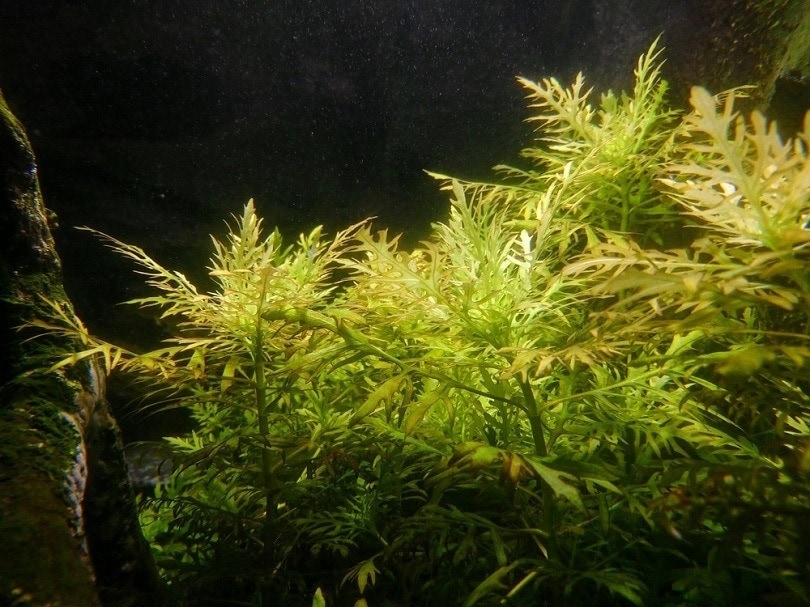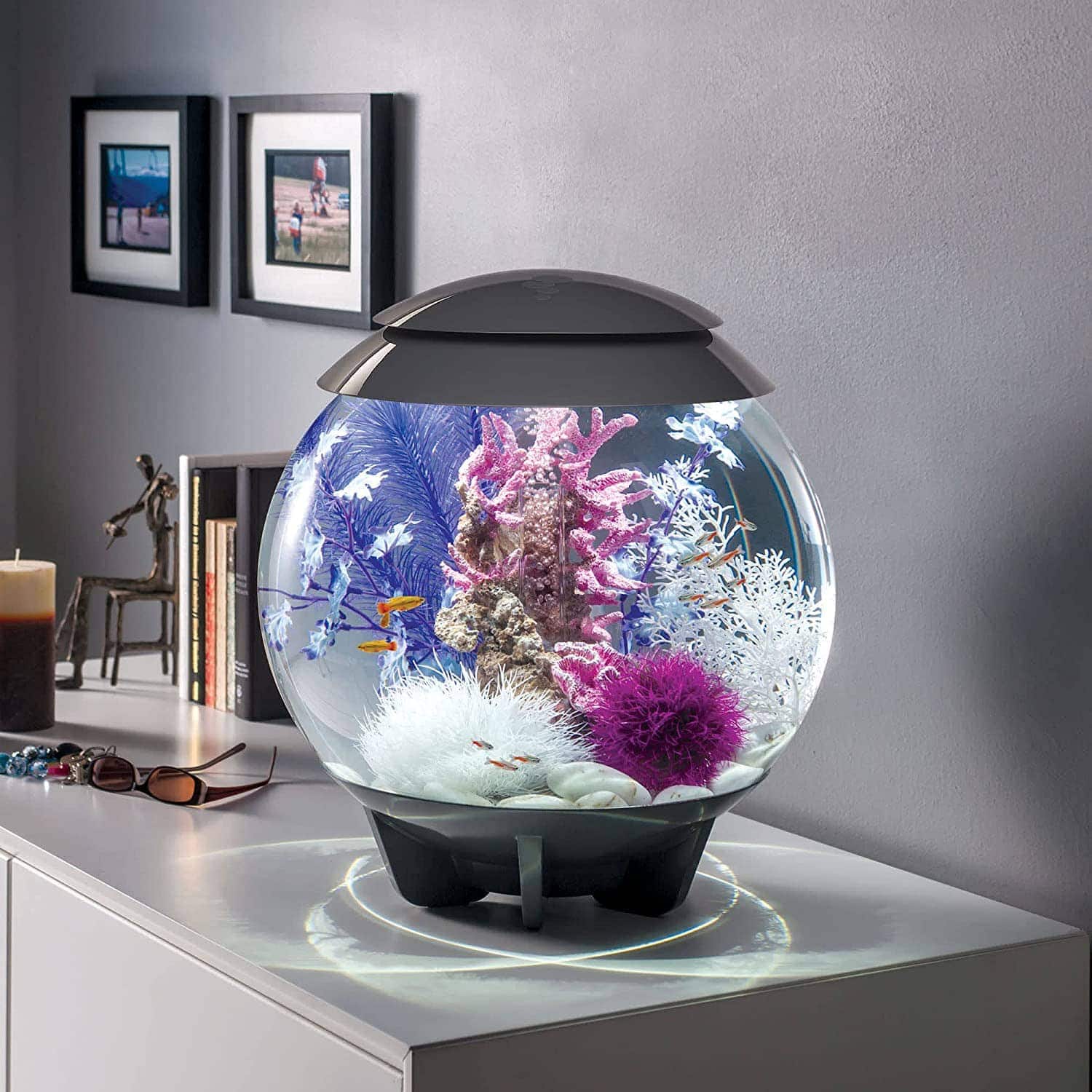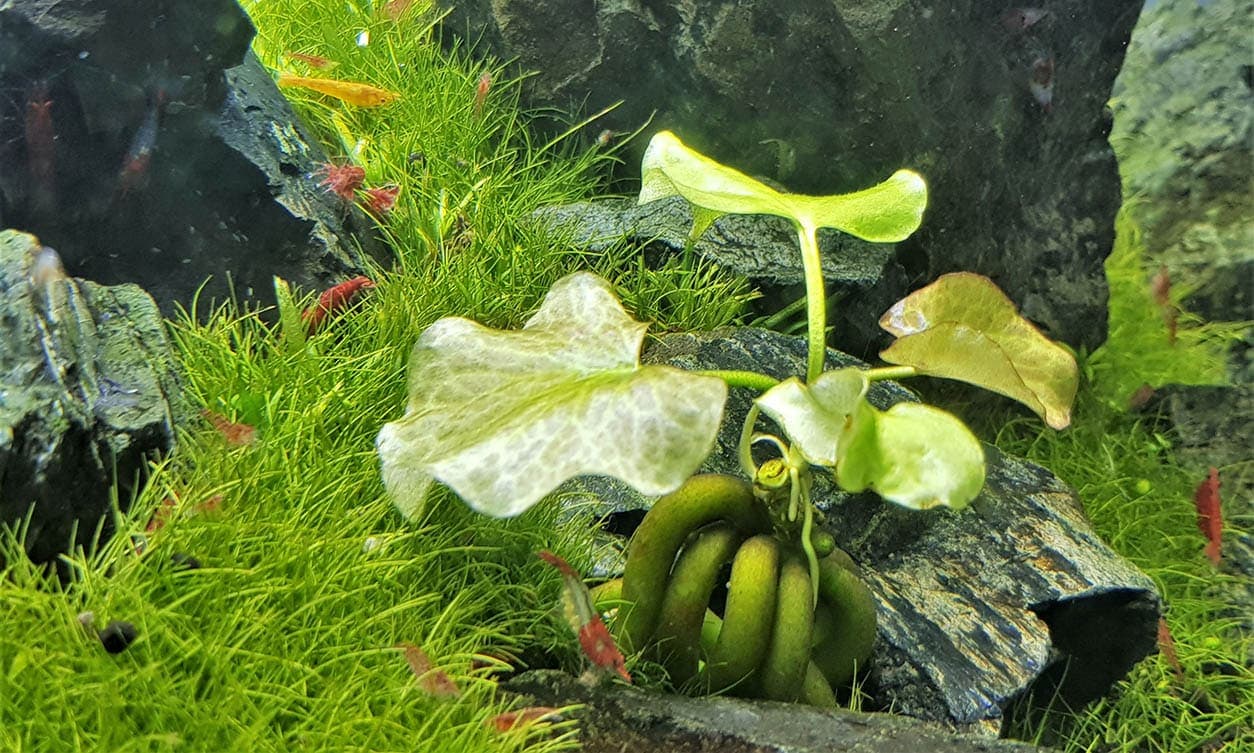Water Sprite Aquarium Plant: Care Guide (Planting & Growing)

Updated on

Usually, when you’re looking for aquatic plants, you have to decide if you want a floating plant or something you can plant in the substrate of your tank. Water Sprite makes this decision easy, though, because it will happily live floated or planted.
This lush, green plant can make your fish and invertebrates feel safe and comfortable and create nice shading in your tank. When planted, Water Sprite plants can easily fill a tank with minimal intervention, so they’re a great plant choice for beginners.
There are some things to consider when bringing home Water Sprites, though, like their tendency to shed leaves into the tank. So, here are the things you need to know about Water Sprite!
Useful Information About Water Sprite
| Family Name: | Pteridaceae |
| Common Name: | Water Sprite, Indian Fern, Oriental Waterfern, Water Fern, Water Hornfern |
| Origin: | Subtropical parts of Asia, Africa, the Pacific Islands, and Oceania |
| Color: | Light to medium green |
| Size: | 12 inches |
| Growth Rate: | Fast |
| Care Level: | Easy |
| Lighting: | Low to high |
| Water Conditions: | Temperature 68-82˚F
pH 6.0-8.0 |
| Minimum Tank Size: | 10 gallons |
| Supplements: | Optional |
| Placement: | Floating; midground to background |
| Propagation: | Plantlets, cuttings |
| Compatibility: | Tropical freshwater tanks |

Water Sprite Appearance
Water Sprite plants can be light to medium green. They have stems with variegated leaves branching from them. Floating Water Sprite may have wider, more flat leaves than planted Water Sprite due to the additional light the floating plant receives. Planted Water Sprite leaves tend to have a thin central stem with thin offshoots, taking on an herb-like appearance. Planted Water Sprites tend to take on a bushier appearance than floated Water Sprites.
Water Sprite grows new leaves out like a fern, with the new growth unrolling outward. These plants can develop roots at almost any point along the stem and are easy to propagate because of this. Floating Water Sprite plants that catch on items in the water, like driftwood and décor, may be able to root themselves into the substrate without being manually planted.
You may notice tiny miniatures of the mother plant sprouting from it and eventually falling off. These plantlets will either float or root themselves into the substrate, forming a new plant.
These plants can reach up to 12 inches tall and may require routine trims to keep new growth in check.
Where to Find It?
Water Sprite is widely dispersed across damp, subtropical parts of the world. In places like the Philippines and Indonesia, you might even find it on a menu, although eating it is not recommended due to potential carcinogenic properties in the plant.
This plant is inexpensive and very easy to come by online. You may be able to find it in big corporate pet stores, but you are more likely to find it in small, local shops.

General Care
These plants are non-flowering, fern-like plants that reproduce readily via plantlets or cuttings. They can be floated, helping to shade low-light plants further down in the tank and fish that prefer indirect light. The growth rate and leaf shape will be determined by whether you plant or float Water Sprites. Floated plants receive more light, so they tend to reproduce faster and develop larger leaves. Planted Water Sprites will develop more delicate leaves and may be taller and leggier.
Water Sprites are a great plant for beginners and anyone looking for a minimal maintenance plant. They prefer warm water, so may do best in tropical tanks. These plants can get large and take up a lot of space, as well as reproducing quickly with ease, so you may have to routinely prune Water Sprite plants to keep them in check in your tank.
Many fish enjoy nibbling on Water Sprites, but they grow fast enough with good lighting that this should not be a problem. Moderate to high lighting will produce the fastest growth.
Habitat, Tank Conditions & Setup
Tank/Aquarium Size
Water Sprite plants are not recommended for tanks smaller than 20 gallons, but ideally, they should be kept in larger tanks due to their rapid growth rate and bushy appearance.
Water Temperature and pH
Water Sprites are tropical plants, so they will grow best in warm water. Their ideal range is around 68-82˚F, but they can survive in water as cool as 65˚F and as warm as 86˚F. The preferred pH range for Water Sprite plants is from 6.0-8.0, but they will often survive pH from 5.0-9.0.
Substrate
These plants can be planted in almost any substrate but usually grow best in sand or gravel. Water Sprite does not require a substrate, though, as these plants are happy to grow floated as well.
Plants
Water Sprite plants will grow well with most tropical aquatic plants, like Swords and Java Ferns. They make a great midground to background plant, depending on the size of your tank, so they can also be paired with low-profile foreground plants and ground covers, like Java Moss.
Lighting
These plants can live with low to high lighting, but the amount of light they receive will be a major determinate of how quickly the plants grow and reproduce. The more light they receive, the faster they will grow. Keep in mind that floated plants will receive significantly more light than planted plants.
Filtration
Water Sprites will help improve the water quality in your tank by absorbing toxins that the plants use as nutrients and releasing oxygen into the water. They tend to shed leaves that may become stuck to filter intakes, so this needs to be monitored. These plants prefer gentle currents but when planted can root well, so a moderate current should be no problem.

Planting Tips
Planting Water Sprite is a lot like planting Hornwort, just toss it in and watch it grow! It does not require planting within the substrate, so how you choose to plant these plants will be personal preference. In tanks with fish that are rough on plants, it may be best to leave them floating because your fish will likely uproot them before they can root well.
Plant weights can help keep Water Sprite plants in place if you choose to plant them into your tank’s substrate. If you leave them floating, keep an eye out for filter outputs pushing the plants around too much. If they are constantly being knocked back underwater, it may affect the growth and reproduction of the plants.
The 6 Benefits of Having Water Sprite in Your Aquarium
1. Easy to plant
Since Water Sprite can be planted into a substrate or left floating, it’s exceptionally easy to plant. If you aren’t sure where you want the plant to be in the tank, you can just toss it in and deal with planting it later. Water Sprite won’t be too picky about where and how you plant it!
2. Provides a safe space
This is an excellent plant for providing hiding places for invertebrates, shy fish, and fry. It can also function as a spawning mop for egg layers. These plants may collect bits of debris in the water, which will draw your invertebrates to the plants, leading them to a safe place to hang out.
3. Rapid growth rate
Water Sprites grow quickly, making them a great choice for newly planted tanks. They are forgiving of mistakes and the loss of a few plants is often not a big deal since the remaining plants will grow larger and reproduce quickly.
4. Reproduces readily
These plants can reproduce via plantlets or cuttings. You can leave your plants to drop plantlets and let those grow into new plants, or you can simply trim the plants you have and plant or float them. Either way, you’ll end up with new Water Sprites.
5. Hardy to a variety of tank setups
Water Sprite plants are great for beginners because they are hardy to a wide pH range and will likely do well in any tank with a heater. They do not require more than low or natural lighting, so a low-tech tank setup works well for growing Water Sprites.
6. Improves water quality
Water Sprite will reduce the toxins in your tank by absorbing nitrate and nitrites for nutrition. It will also release oxygen and absorb CO2 from your tank.
Concerns About Water Sprite
Water Sprite plants can become invasive if allowed to escape into native waterways, especially in warm and humid areas. It’s important to not throw out Water Sprite, or any non-native plant, anywhere that it may end up in the local waters. Ideally, it should not be thrown out with yard trash like leaves, but in the normal trash. It should not be tossed into ponds, rivers, creeks, or even drainage ditches.
These plants can take over your tank if you let them, so routine pruning is necessary. If you have a smaller tank, this is especially important because these plants will begin taking up valuable swimming space and may become clogged in filters.
Final Thoughts
Water Sprite is a wonderful aquatic plant, especially for warm aquariums. It may not stand up to goldfish or cichlids, but it’s usually inexpensive and accessible enough that you can try it out.
These plants are nice for tank variety, especially since planting versus floating will create different appearances of the plants. Your invertebrates and small fish, like guppies and danios, will enjoy swimming through the stalks of these plants as well.
Be prepared for some routine trimming to keep these plants from taking over. You’ll also need to watch for dropped leaves that may clog intakes. With a little maintenance, Water Sprites are a nice addition to tanks.
Featured Image Credit: Cheng Wei, Shutterstock










